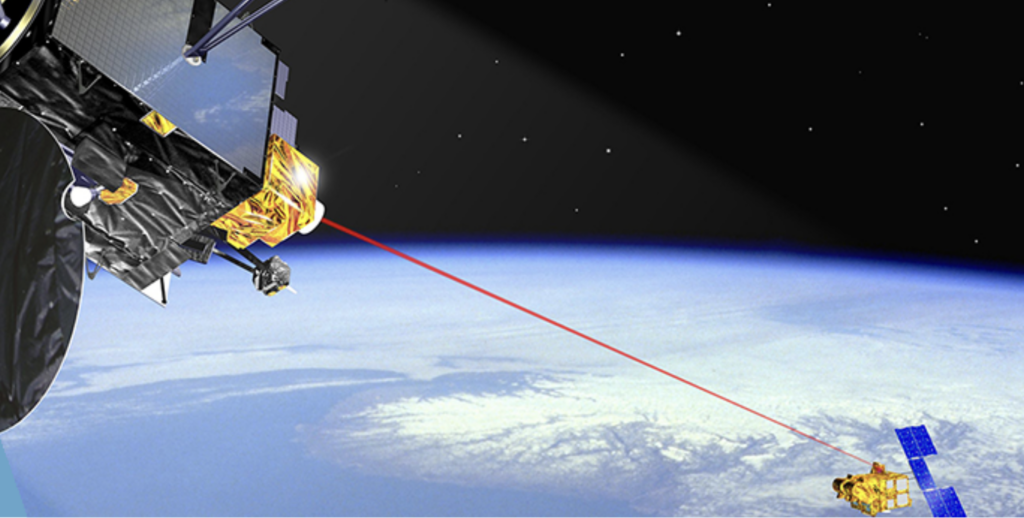CACI in December acquired SA Photonics in order to pursue military and commercial markets for small, lower cost optical terminals
WASHINGTON — CACI over the next several months will deliver 40 optical communications terminals for the Defense Advanced Research Projects Agency’s Blackjack satellites.
The terminals are being produced under a $16.3 million DARPA contract awarded in 2020 to SA Photonics, a California-based company that CACI acquired late last year for $275 million.
Optical terminals are used to connect satellites in orbit so they can transfer data in space.
CACI, a large defense contractor based in Reston, Virginia, makes advanced laser communications systems for NASA and intelligence agencies, and decided to buy SA Photonics in order to pursue military and commercial markets for small, lower cost optical terminals, Todd Probert, CACI’s president of national security and innovative solutions, told SpaceNews.
The company is expanding manufacturing facilities in Florida so it can produce several hundreds optical terminals per year, said Probert. The first batch of DARPA’s terminals will be delivered this summer so they can be integrated with the Blackjack satellite buses made by Blue Canyon Technologies and be ready to launch sometime this fall.
Blackjack is an experiment to demonstrate the capabilities of small satellites in low Earth orbit for military communications, missile warning and navigation.
Optical terminals from SA Photonics already are in space as part of a DARPA demonstration called Mandrake 2. Two small satellites — launched June 30 on a SpaceX rideshare mission — were deployed by the agency to prove out optical inter-satellite link technology in preparation for the first launch of Blackjack satellites.
A DARPA spokesperson said Jan. 28 that the Mandrake 2 satellites “remain healthy and testing is ongoing.”
The first batch of Blackjack satellites will launch this fall also on a SpaceX rideshare, the spokesperson said.
Probert said successful performance of the terminals in the Blackjack program will position the company to compete for much larger orders for the Space Development Agency’s Transport Layer. SDA is in the process of selecting as many as three prime contractors to build 144 satellites for the Transport Layer Tranche 1. Each satellite is expected to have anywhere from three to five optical terminals, which makes this a huge opportunity, he said.
“We’ve been in active discussions with every one of the spacecraft manufacturers looking to build satellites for SDA,” said Probert. “Tranche 1 is a very important award for us so we’re watching that very closely.”
To win Tranche 1 suppliers will be pressed to bring down their prices, he said. Before buying SA Photonics, CACI focused on the higher-end laser communications terminals designed for higher orbits and tougher radiation environments. “We were working a number of internal programs to build a lower price point version that would hit the SDA market,” said Probert. So the acquisition of SA Photonics came at an opportune time, he added.
CACI also is courting commercial broadband constellation customers, Probert said. “The optical terminals that we produce allow for high bandwidth transport of data. So it’s a logical expansion of the technology and we’re in discussions with at least two commercial constellations today.”
